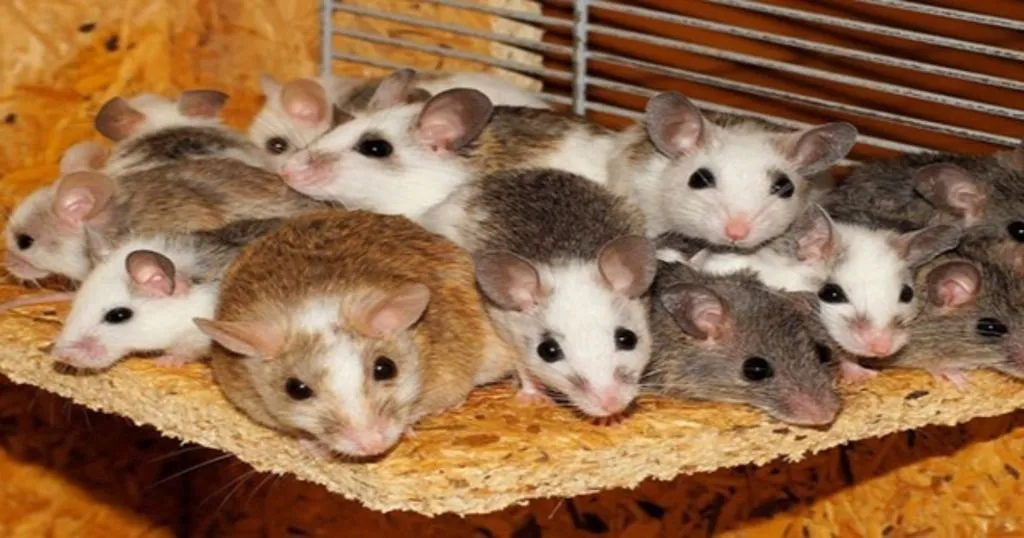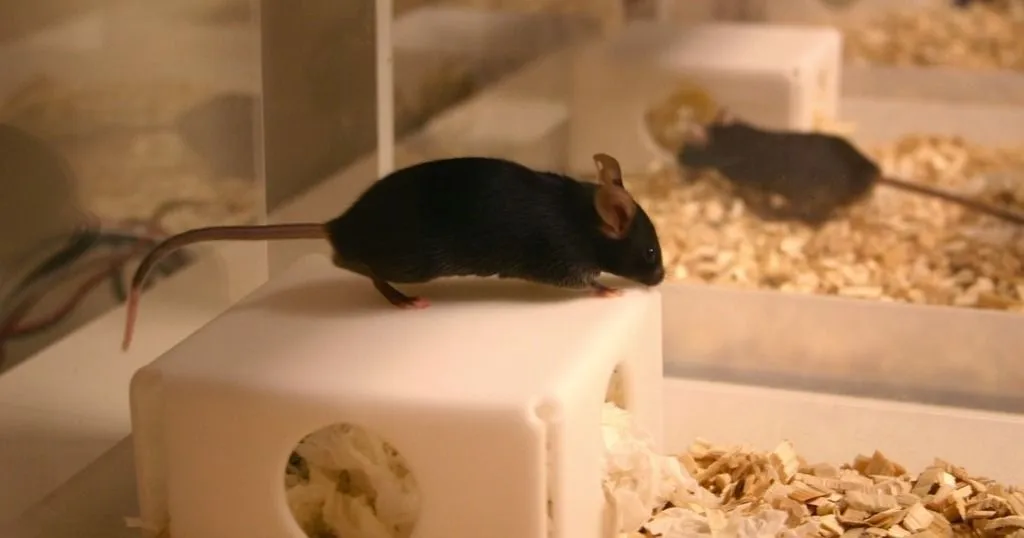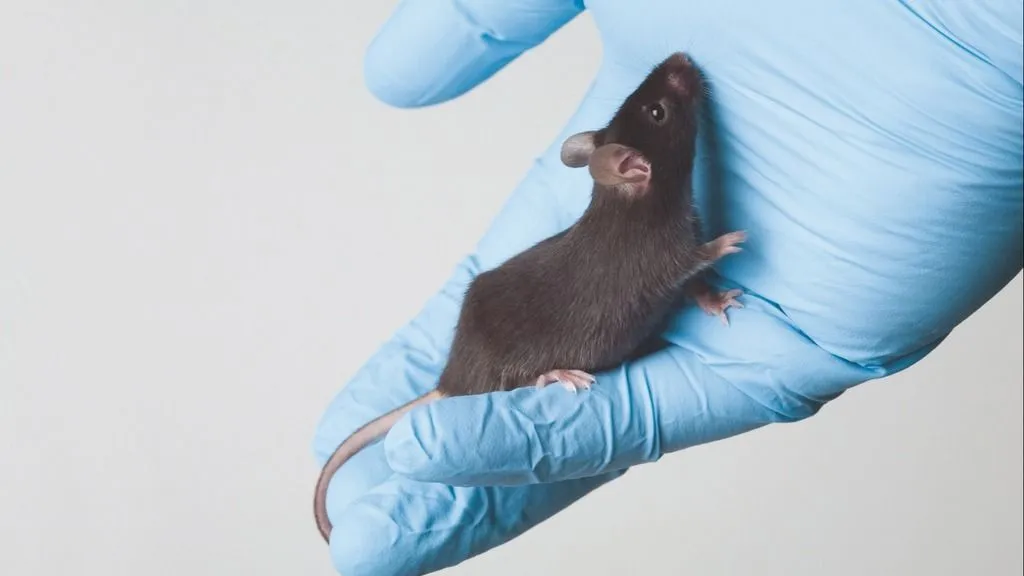Determining the best housing strategy for mice
When using animal models for scientific research, their welfare should be a priority. Here, we're looking at the effects of different housing strategies for mice, and how PhenoTyper provides researchers with insight.
Posted by
Published on
Thu 12 May. 2022
Topics
| Welfare | EthoVision XT | Home Cage | Mice | PhenoTyper |

When using animal models for scientific research, their welfare should be a priority. Here, we're looking at the effects of different housing strategies for mice, and how PhenoTyper provides researchers with insight into animal well-being.
There is, of course, a strong ethical argument for maximizing the well-being of animals used in research. William Russel and Rex Burch famously laid out this case in their 1952 paper The Principles of Humane Experimental Technique; in which they provided a blueprint for animal welfare considerations in science.1
Hopefully, the value of minimizing unnecessary suffering and distress in animals is readily apparent to most. But the argument for animal welfare goes deeper than this. A large volume of research shows that animals whose well-being is compromised are likely to exhibit physiological and behavioral abnormalities.2,3 As such, factors that contribute to an animal's well-being – insofar as that can be assessed – should be carefully controlled to ensure experimental validity.
Are you interested in building your own rodent neurobehavioral core? Download this free guidebook on how to build a rodent neurobehavioral core and learn more about the why, who, what and how.
The importance of housing
Since mice are, by far, the most commonly used animal models in biomedical research, maximizing their well-being is important. How mice are housed plays an important role in this.
Mice are naturally sociable animals. As a result, it's generally recommended that they should be housed in groups wherever this is practical.4 However, male mice don't naturally share territories, and inter-male aggression is a welfare concern for mice housed in captivity where they cannot escape from each other.5 This means that pair housing or single housing are often more practical choices.
Other factors – experimental design and disease control in particular – also make single housing a more appealing option in many cases. Where single housing cannot be avoided, some advocate the use of cage dividers that permit sensory but not physical contact between neighboring mice to facilitate some level of social interaction.6
The exact effects of housing on mice's well-being, behavior, and physiology are still subject to debate. However, research indicates that the single housing of mice is linked to various physiological ailments. These include reduced growth rates and reduced lean body mass during growth, higher susceptibility to obesity in adulthood and higher levels of visceral adipose tissue mass.7,8
Behavior is affected by housing too. Single-housed mice are shown to exhibit anxiety-like and depressive-like behaviors alongside disrupted cognitive function compared to pair- or group-housed mice – though it appears that these effects also depend on a range of other environmental and physiological factors.9–11 "Separated pair" housing using cage dividers appears to produce some behavioral and locomotor differences compared to single housing – although it's not entirely clear whether this correlates to a difference in well-being.
All of these changes should ideally be taken into account in the research goals of experimenters using mice.
Choosing the optimal housing strategy for your experiment
Ultimately, housing conditions tend to be constrained by experimental parameters. For example, studies involving cannulation of mice must use single housing in order to prevent mice from damaging each other's cannulas.12
Studies of energy balance regulation also typically prefer single housing so that the food intake and thermal profiles of individual mice can be monitored accurately. Single housing in individually vented cage (IVC) systems can also play a crucial role in preventing disease transmission between mice.
Nonetheless, it's always worth considering whether your experimental parameters could allow for paired (or separated pair) housing to reduce stress, achieve longer testing periods, and improve experimental validity. Many experiments involve testing mice in a novel environment separate from their home cage – testing them in their home environment instead provides another opportunity to lower stress and eliminate the confounding effects of a change in environment.13
Evaluating the effects of housing paradigms on mice
Housing can have profound behavioral and physiological effects on mice: phenotypically, a socially housed mouse is not the same animal as an individually housed mouse. Monitoring animals in their home cage and comparing their behavior during experiments is crucial to understanding the effects of different housing paradigms. So – whether you opt for social or separate housing – make sure you score everything!
PhenoTyper is a fully integrated and automated cage monitoring system. By enabling easy monitoring of individual animals in their home cage, PhenoTyper provides researchers with increased resolution when considering their behavior within a specific housing paradigm.
PhenoTyper is fully customizable to suit your research needs. Each configuration consists of a bottom plate, four replaceable walls, and a PhenoTyper top unit. Different walls are available to accommodate any set up, with attachments for accessories such as drinking bottles, feeding stations, and shelters. These can be used to provide feedback on animal behavior to EthoVision XT. The PhenoTyper top unit houses LEDs and a camera for automated tracking, with other sensor and stimuli options available.
Automated tracking using EthoVision XT offers full integration of data and automation of experiments. EthoVision XT furthermore provides accurate tracking and calculation of a wide range of physiological and behavioral parameters and provides researchers with unparalleled versatility in data processing and visualization. As a result, EthoVision XT is now by far the most cited video tracking system in the world.14
Find out how PhenoTyper can give you deeper insight and faster results – get in touch with Noldus today.
References and further reading
- Russell, W. M. S. & Burch, R. L. (1959). The principles of humane experimental technique. The principles of humane experimental technique
- Poole, T. Happy animals make good science. (1997). Lab Anim 31, 116–124
- Baumans, V. (2005). Science-based assessment of animal welfare: laboratory animals. Revue Scientifique Et Technique-Office International Des Epizooties 24, 503
- Code of Practice for the Housing and Care of Laboratory Mice, Rats, Guinea Pigs and Rabbits | Agriculture Victoria. https://agriculture.vic.gov.au/livestock-and-animals/animal-welfare-victoria/pocta-act-1986/victorian-codes-of-practice-for-animal-welfare/code-of-practice-for-the-housing-and-care-of-laboratory-mice-rats-guinea-pigs-and-rabbits.
- Kappel, S., Hawkins, P. & Mendl, M. T. (2017). To Group or Not to Group? Good Practice for Housing Male Laboratory Mice. Animals (Basel) 7, E88
- Hohlbaum, K. et al. (2020). Social enrichment by separated pair housing of male C57BL/6JRj mice. Sci Rep 10, 11165
- Schipper, L., van Heijningen, S., Karapetsas, G., van der Beek, E. M. & van Dijk, G. (2020). Individual housing of male C57BL/6J mice after weaning impairs growth and predisposes for obesity. PLoS ONE 15, e0225488
- Schipper, L., Harvey, L., van der Beek, E. M. & van Dijk, G. (2018). Home alone: A systematic review and meta-analysis on the effects of individual housing on body weight, food intake and visceral fat mass in rodents. Obesity Reviews 19, 614–637
- Liu, N. et al. (2019). Single housing‐induced effects in cognitive impairment and depression‐like behavior in male and female mice involve neuroplasticity related signaling. European Journal of Neuroscience 52
- Pasquarelli, N., Voehringer, P., Henke, J. & Ferger, B. (2017). Effect of a change in housing conditions on body weight, behavior and brain neurotransmitters in male C57BL/6J mice. Behavioural Brain Research 333, 35–42
- Buckinx, A. et al. (2021). Exploring Refinement Strategies for Single Housing of Male C57BL/6JRj Mice: Effect of Cage Divider on Stress-Related Behavior and Hypothalamic-Pituitary-Adrenal-Axis Activity. Frontiers in Behavioral Neuroscience 15
- Xavier, A. L. R. et al. Cannula Implantation into the Cisterna Magna of Rodents. J Vis Exp 57378 (2018) doi:10.3791/57378.
- Home cage & Welfare - PhenoTyper: https://noldus.com/applications/home-cage-welfare.
- Benefits - EthoVision XT: https://noldus.com/ethovision-xt/benefits.
Related Posts

Scientific collaboration at its best: Home cage monitoring reviewed
Learning how to use software for video tracking in animals

